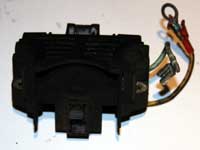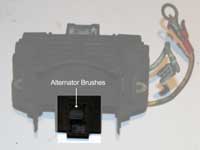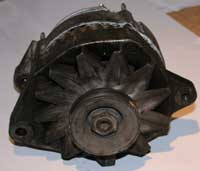Most cars now come with an Alternator that charges the car battery rather than a Dynamo.

The main difference is that the Alternator generates AC (Alternating) current initially that is then rectified to DC (Direct Current) that charges the Battery whereas the Dynamo would produce DC directly and voltage limiters would manage the voltage sent to the battery to recharge it. Alternators are preferred nowadays because they are more efficient and (supposedly) more reliable.
It seems to be custom now that when an Alternator stops working you exchange it for a new one at either a garage or through Motor Factors, whilst this will work you will probably spend an additional amount of money that could be up to 500% or more than what it would cost to repair the alternator. This is especially so now the cost of Copper has reached record highs making the component parts of the alternator extremely expensive. The price of copper is probably why it is also expensive to get an alternator from a second hand (scrap ) dealer.
If the control unit is the reason it has failed then even getting a second hand unit will be more expensive as often the second hand dealer will not break up an alternator into the individual parts.
The majority of the time (excluding physical damage) the reason why the Alternator stops working is that the Rectifier control unit has failed or Brushes are too short to connect to the Armature, often both will happen together as the brushes cause excessive voltage spikes when they just touch and then spring off as they reach the end of their service life.

On quite a few Alternators both the control unit and Brushes are in a single unit mounted at the back of the alternator
that can be replaced at the fraction of the cost of a exchange or new alternator.
There is a problem with replacing the control unit however, this is the fact that trying to find a retailer that stocks the unit may prove difficult, main agents will be able to get the item however often these will need to be ordered in and you’ll be paying main agent prices. Good Car Electrical Motor Factors should be able to supply the equivalent part.
To confirm if it is likely that the control unit has failed you would first need to remove the alternator from the car (or at least remove its drive belt) if the alternator rotates freely on its bearing with no noise nor play in the bearing then there is a very strong possibility it is the control unit. If there is play or noise in the bearings then it is possible that the bearing have failed which could give rise to physical damage as the armature moves to a greater extent within the unit and could contact other components damaging them.
If the bearings are suspected it might still be possible to repair the unit although it would need to be stripped down to check that no further damage has occurred. If it is only the bearing then these can replaced at low cost.
If the Alternator is ok mechanically then check the copper windings by measuring the resistance across the slip rings with an ohmmeter, The reading should be around 4-6 ohms as a typical value, if you get measurements in the 100’s or kiloohms or very low (below 2 ohms) then the unit should be considered suspect and perhaps an exchange may be the best option.
If the above all check out you are effectively left with the control unit/ brushes or possible the diodes used to rectify the AC. The diodes are extremely hardy and unless you’ve had high voltages passed in reverse through the alternator then it is unlikely they’ve failed (although again physical damage will kill them!)

The brushes are spring loaded to always be in contact with the armature, they are designed to wear out very slowly so they will eventually fail and again is another reason why they are the most regular reason for the alternator to pack up. Typically they should be longer than 7-8mm and the rings on the armature they connect to should be shiny, if sections of the ring are dull or blackened this this could indicate the brushes are too short.
If the Brushes are OK and all other checks above have not raised any concerns then the control unit should be suspected. This can be checked although to be honest any DIY test can give errant results and given the cost of replacement is probably less than £20 it’s easier putting in a new one rather than faffing around.

